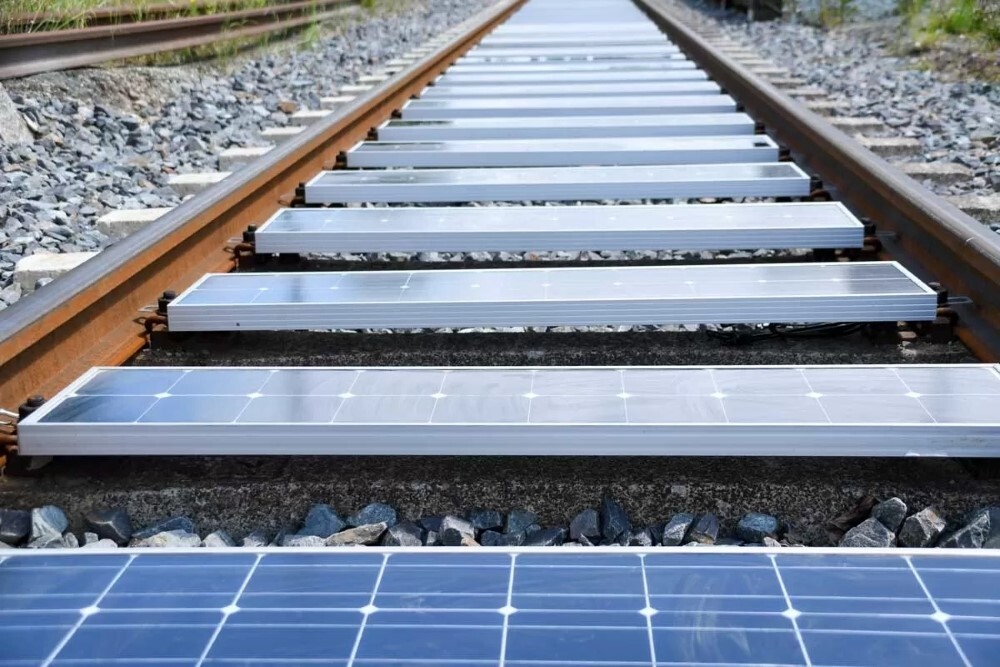您想继续阅读英文文章还
是切换到中文?
是切换到中文?

THINK ALUMINIUM THINK AL CIRCLE

What if the very ground beneath our trains could double as a power source, clever, cost-wise and brilliantly green? India’s transport sector is witnessing a new wave of innovation that blends infrastructure with sustainability. This includes the incorporation of removable solar panels on the railway tracks at Varanasi.

Indian Railways has commissioned the nation’s first removable solar panel system integrated between railway tracks at Banaras Locomotive Works (BLW), Varanasi. Officially inaugurated on August 15, 2025, the pilot installation spans 70 metres with 28 panels, delivering a total peak capacity of 15 kWp.
The solar panels are affixed to concrete sleepers using epoxy adhesive and supported with rubber pads to endure train-induced vibrations. The removable design enables straightforward maintenance without interrupting operations, offering a practical advantage over conventional fixed systems.
If deployed at scale, the initiative is expected to deliver approximately 321,000 kWh per kilometre annually, optimising unused track space and eliminating the requirement for additional land acquisition.
This pioneering installation forms part of Indian Railways’ broader strategy to achieve net-zero carbon emissions by 2030, complementing ongoing rooftop solar programmes and large-scale renewable energy initiatives. Developed in-house by BLW engineers, the project underscores the organisation’s capability to drive innovation in sustainable infrastructure.
Also read: Next-gen solar panels built for Rajasthan heat aim to power India’s green future
Previous solar panel installations by Indian Railways
Indian Railways first deployed solar-powered coaches on a DEMU (Diesel Electric Multiple Unit) train introduced on July 14, 2017, departing from Safdarjung Railway Station in Delhi. Each coach was outfitted with roof-mounted solar panels generating approximately 300 Wp each, collectively powering onboard systems such as lighting, fans and information displays.
Indian Railways has been more focused on advancing its clean-energy transformation by integrating solar power across its operations. The national transporter has deployed solar installations at approximately 960 railway stations, with orders placed for 198 MW of rooftop solar capacity across 550 stations in key hubs including Varanasi, Delhi, Jaipur, Secunderabad, Kolkata, Guwahati, Hyderabad and Howrah.
Complementing the system-wide electrification initiative, solar panels are also being trialled on train coaches, driving lights, fans and charging points onboard, helping to curb diesel expenditure by an estimated INR 3 crore (USD 360,000) per train over 25 years.
In addition, Indian Railways has initiated a pilot 1.7 MW solar plant in Madhya Pradesh that feeds 25 kV AC directly into the overhead traction lines, potentially generating 2.5 million units annually and saving about INR 1.37 crore (USD 164,400) per year.
These efforts are anchored to the ambitious net-zero carbon emissions target for 2030 and reflect its strategic shift toward complete solar-powered traction and station operations.
Note: To feature your brand and share insights, contribute an article or interview in our forthcoming e-magazine "End-user Revolution: ALuminium’s Impact on Modern Living"
Responses








